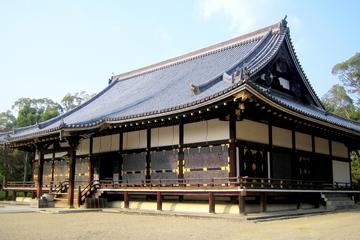Ninna-ji Temple
TIME : 2016/2/22 11:49:37

Ninna-ji Temple
Built at the end of the 9th century in the year 888 and founded by the reigning Emperor of the time, Ninna-ji Temple maintained a centuries long reign as a royal place of worship. Members of the Imperial Family served as the temple’s head priest, bringing prestige that lasts to this day. To further elevate its status, the temple was originally named Monseki-jiin and served as a residence for a member of the Imperial Family who had entered priesthood.
Today, Ninna-ji is the center of the Omuro sect of Shingon Buddhism and houses buildings from the former Imperial Palace in Kyoto. Among the relocated historical treasures is a five-storied pagoda and Reiho-kan, a structure that houses cultural treasures such as sculptures, paintings, and the seated figure of Amida-Nyorai Buddha, the deity of Paradise. Encompassing the temple buildings is an orchard of dwarf cherry trees, making Ninna-ji one of the most popular spots to see the cherry blossoms in Spring.
Practical Info
Ninna-ji is a ten minute walk west of Ryoanji Temple and a few paces away from Omuro Ninnaji Station on the Keifuku Kitano Line – a small train that connects Arashiyama with the Kitano district. The admission fees are as follows: 500 yen for entrance ($5USD), 500 yen for cherry blossom viewing ($5USD), and 500 yen to gain access to the treasury hall, or Reiho-kan building ($5USD). The temple is open year-round.
